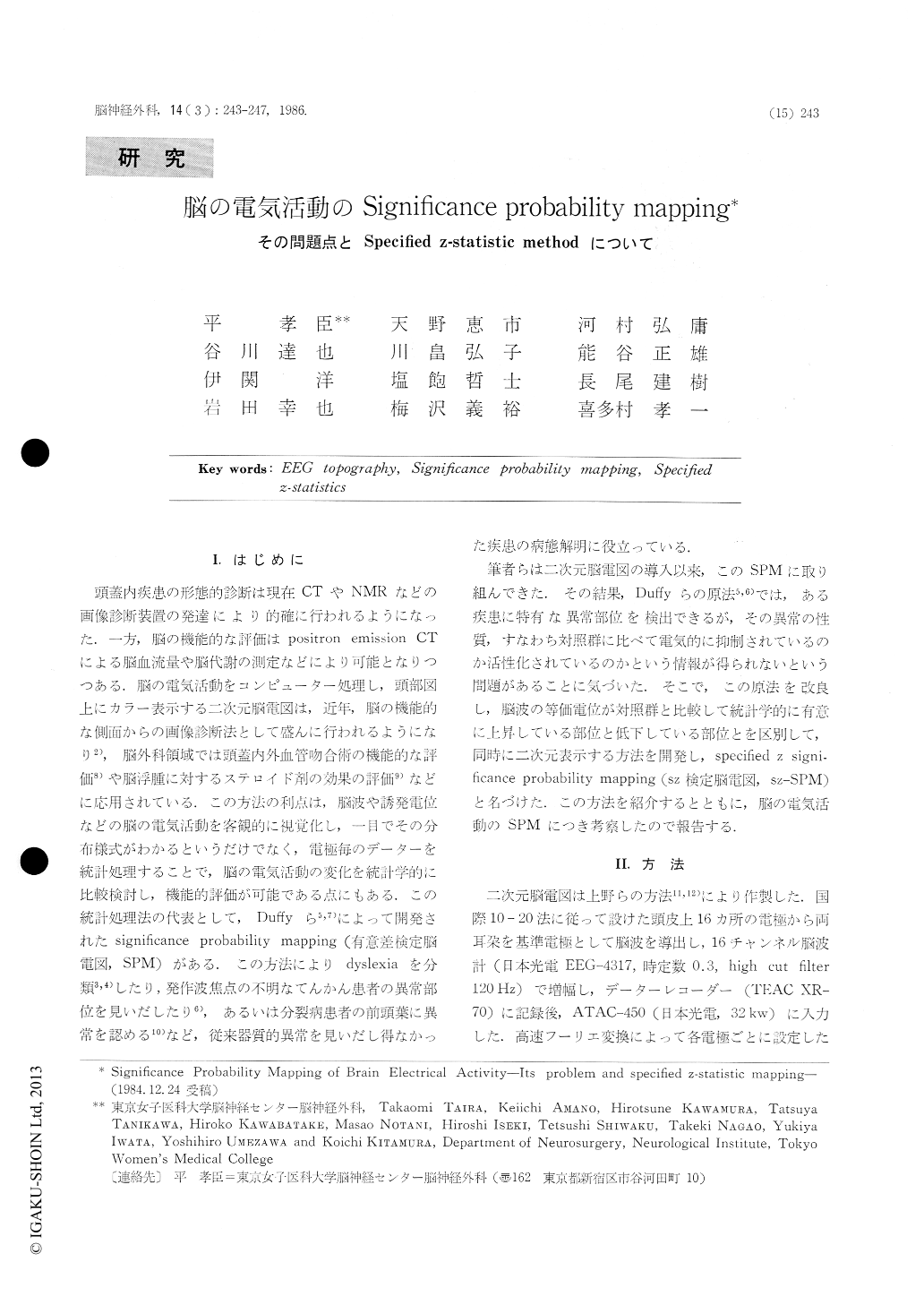Japanese
English
- 有料閲覧
- Abstract 文献概要
- 1ページ目 Look Inside
I.はじめに
頭蓋内疾患の形態的診断は現在CTやNMRなどの画像診断装置の発達により的確に行われるようになった.一方,脳の磯能的な評価はpositron emission CTによる脳血流量や脳代謝の測定などにより可能となりつつある.脳の電気活動をコンピューター処理し,頭部図上にカラー表示する二次元脳電図は,近年,脳の機能的な側面からの画像診断法として盛んに行われるようになり2),脳外科領域では頭蓋内外血管吻合術の機能的な評価8)や脳浮腫に対するステロイド剤の効果の評価9)などに応用されている.この方法の利点は,脳波や誘発電位などの脳の電気活動を客観的に視覚化し,一目でその分布様式がわかるというだけでなく,電極毎のデーターを統計処理することで,脳の電気活動の変化を統計学的に比較検討し,機能的評価が可能である点にもある.この統計処理法の代表として,Duffyら5,7)によって開発されたsignificance probability mapping(有意差検定脳電図,SPM)がある.この方法によりdyslexiaを分類3,4)したり,発作波焦点の不明なてんかん患者の異常部位を見いだしたり6),あるいは分裂病患者の前頭葉に異常を認める10)など,従来器質的異常を見いだし得なかった疾患の病態解明に役立っている.
筆者らは二次元脳電図の導入以来,このSPMに取り組んできた.
Significance probability mapping (SPM) of brain electrical activity first described by Duffy et al. isuseful tool for studying functional aspects of brain disease. Z-statistic SPM is able to identify the area of brain electrical activity deviated with statistic sig-nificance from the control group. The problem of this method is, however, that the nature of deviation, i.e., whether it is increase or decrease of electrical activity, can not he displayed. From this point of view, we attempted to use modified z-statistic method.

Copyright © 1986, Igaku-Shoin Ltd. All rights reserved.


